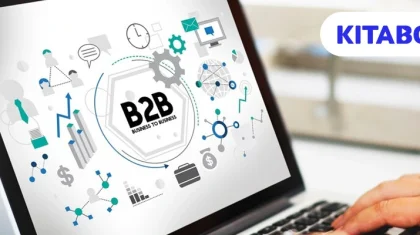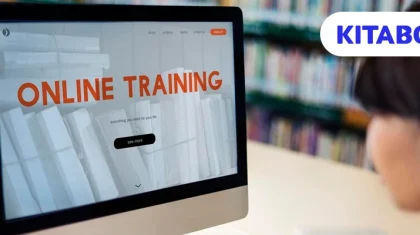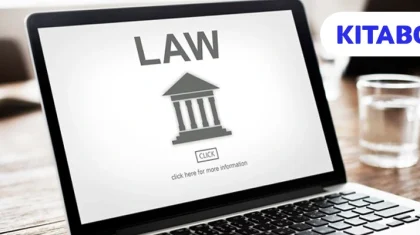
7 Most Effective Ways to Deliver Training Content on Mobile
We all have accessed the training deck on the company intranet from our office desktops. But, the access to that content is limited only till the time we are present at our work premises. What if we want to go through it while we are outside the office? Maybe your employees want to brush up their knowledge while commuting to work? In order to create a dynamic training strategy, you need to find a more efficient alternative to desktop computers, and that is mobile devices.
Smartphones have become an indispensable part of our lives, and that’s the reason why every industry is developing mobile applications to leverage mobile devices to increase their sales. Corporate training is also one such domain which would benefit if delivered on a mobile platform. By 2024, 1.87 billion people will be mobile employees, comprising 42.5% of the global workforce. Going by this report, it seems like enterprises must create mobile-friendly content to deliver training.
What are the Benefits of Delivering Corporate Training on a Mobile-based Platform?
- Provides instant access to information on the go
- Access to updated training content
- Suitable for all types of learners, as everyone can learn at their own pace
- Work schedule stays unaffected as employees can access the training even outside the workplace
- Eliminates the need for classrooms and instructors
- Brings down expenses by avoiding the cost of training instructors and facilities
Now that you are aware of the benefits that mobile training delivery offers, you might consider developing a course module to be accessed via mobile devices. But before proceeding with that idea, there are a few things you would want to consider. Mobile training does not mean making your desktop training material available on mobile screens. A mobile screen is much smaller than a regular computer screen, and hence, you would need to customize the content to be mobile friendly.
Top 7 Factors You Must Consider Before Delivering Training Content on Mobile -
1. Know Your Target Audience:
Today’s workforce is mostly mobile-savvy. Give them the latest mobile device, and they will easily figure out its features and functions and how to work around it. This might not be the case with some people though. There could be people in your organization who might not be very comfortable with latest mobile devices and their functions. You should therefore design a training module that has an easy to use interface, so that every employee can use it without any difficulty. Simple designs and navigational features will offer ease of access, allowing them to open and go through the training module easily.
2. Decide the Training Format:
What type of training module do you want to create? Is your training content too wordy? You might want to go for an eBook style training module, which the employee can comfortably read and remember. Or if you think that you can convey the information better in a video format, then develop a training video. There are different video formats that you can choose from, screencast, animated videos, talking heads etc. Or if you want to give your employees a more engaging experience, you could design a simulation-based training program. Ensure that you have a responsive website which works well on all screen sizes. You must consider a training format where you can effectively convey the information and present it in an aesthetic and professional style.
3. Keep the training Content Short:
Always ensure that while creating any kind of content for mobile devices, keep it short. The most common mobile phone screen size is between 5 and 5.5 inches. Watching or reading lengthy content on a small screen mobile phone or a tablet might not be a very comfortable experience for the learners. The whole purpose of delivering training content on mobile is for employees to access it anytime, especially during short intervals.
Hence, mobile learning content must always be bite-sized. Create small knowledge nuggets with important points, so that employees can have just-in-time information. A mobile training module must not take more than 7-8 minutes to read. Such short bursts of information help in knowledge retention. And it also makes it easier for your employees to complete the lessons faster.
Guide:
How to Create Mobile-Friendly Training Content
4. Enable Offline Reading:
Workplaces are usually busy environments where employees might not find the time to complete the training in one session or even in a week’s time. But, an enterprise cannot afford to lose its resources to training for such a long time. They need the employees on the work floor. This is where mobile training proves beneficial to your organization and your employees.
When you deliver training content on mobile devices, they have the freedom to go through it anytime and anywhere. And this must be possible even in the absence of an internet connection. Some employees might have a poor internet or network connection. Do not let this hamper their learning experience. Enable offline accessibility so that they can access training content even without internet. 91% of mobile users say that access to content is very important. By giving them offline access, you are providing them with 24×7 access to training content.
5. Ensure Content Format is Compatible with All Devices:
eBooks, videos, audio, images are all available in different formats. For example, a video file can be mp4, .avi, .wmg etc. While incorporating these in your training module, ensure that you choose a file format that is compatible with all devices and operating systems. It won’t do good if your employees can’t see a particular image because their phone doesn’t support the format. And you can’t expect them to purchase a new device only to go through your training content. 83% of mobile users say that a seamless experience across all devices is very important. In order to make your training content accessible across all devices, it is advisable to use commonly used formats that is compatible with most mobile devices and systems.
6. Decide the Kind of Multimedia You Want:
These days, training content has a lot of interactive elements to keep the employees engaged. In order to capture their attention, enterprises are including engaging videos in their training module. Apart from videos, you can add rich images and graphics to go with the text content. You can include a read-aloud feature, allowing the employees to listen to the training content while travelling, going for a walk, or during a coffee break. You can add multiple media elements to keep the training module interesting and engaging for the learner. Choose a multimedia style that will support and enhance your training module. All these interactivities are essential to help them connect and interact with their learning content.
7. Include Interactive Content:
Now that you have your employees engaged with your content, allow them to actively interact with it. You can achieve this by including certain drag and drop and click and reveal elements. When you add interactive features, you enable the learners to take control of the learning program. By including external links, you could lead them to a relevant website which would offer additional information. A pen tool for taking notes, a search feature for finding topics or chapters across the module, page zoom for better readability, all these features help the employees to interact with the training module.
You can include quizzes and exercises to gauge their understanding. Set it up in such a way that the employee receives real-time results. You could use the analytics function to see the progress of your employees. This will help you to keep track of their performance.
Enterprises develop mobile training so that their employees can make the best use of it and refer to the training material whenever applicable. In order to make this possible, ensure that you consider all the above-mentioned factors before you design the content for the learning module. A compelling and effective mobile training program will help your employees engage with the content and remember the information better. An enterprise usually spends an enormous amount to create learning and development programs for their employees. Mobile content delivery reduces your training expenses by eliminating the need for printed manuals and classroom instructors.
Using mobile devices for learning and development is an effective training strategy, as it increases interactivity, engagement and knowledge retention. Moreover, it also makes the best use of time as employees can access it whenever they want. Delivering training content on mobile devices ensures that your employees always have precise and concise information available with them at all times. This will help them stay informed and updated on their job and perform their tasks efficiently.
Suggested Reads:
- 10 Trends in Education Technology That Will Have A Major Impact
- 11 Best Apps to Read PDF Books on Android Devices
- Online Education vs Traditional Education
- How to Measure Training Effectiveness and Impact
- Top 9 Online ePUB Readers for Windows OS Users
- 5 Best PDF eBook Readers for Windows and Android Users
Discover how a mobile-first training platform can help your organization.
Kitaboo is a cloud-based platform to create, deliver & track mobile-first interactive training content.


